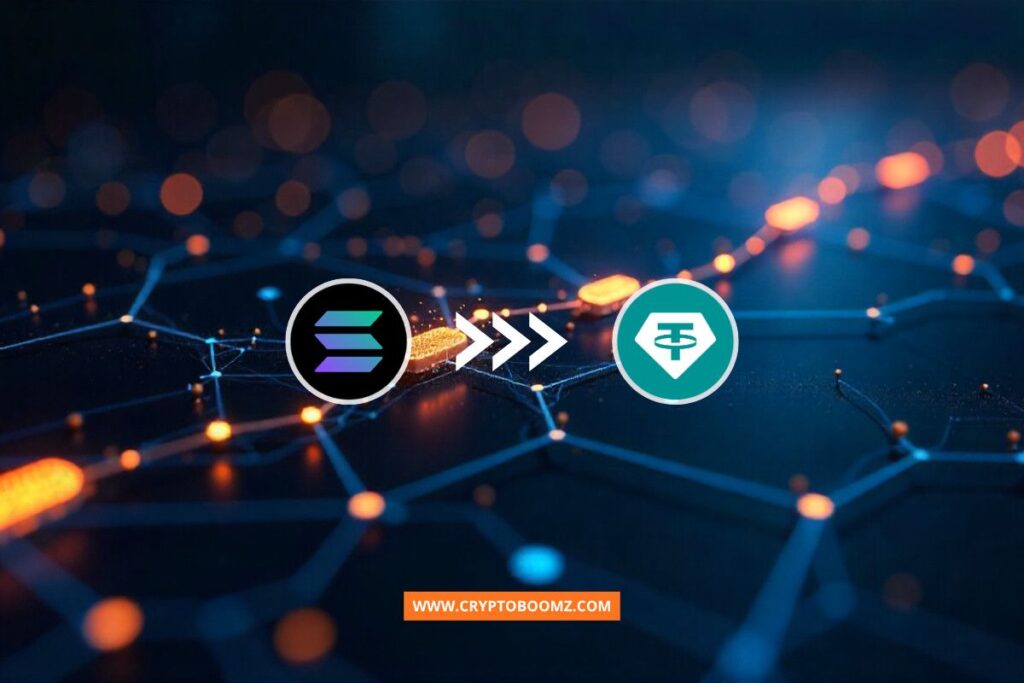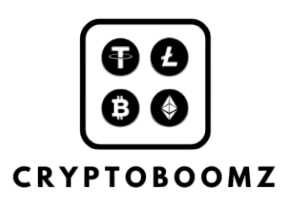
Introduction
Tether’s Solana integration marks a major step in blockchain innovation. The launch of USDT0 and XAUT0 tokens on the Solana blockchain through LayerZero technology gives users access to $175+ billion in cross-chain liquidity. Now, assets like stablecoins and tokenized gold can travel across multiple blockchains without delay or risk.
By connecting Solana to networks like Ethereum, Tron, Polygon, Arbitrum, and TON, this upgrade strengthens the foundation for DeFi, real-world assets (RWA), and institutional finance. For both developers and investors, it’s a move toward a more unified and efficient digital economy.
What Is Tether’s Solana Integration?
Tether has introduced two new omnichain tokens — USDT0 (a stablecoin) and XAUT0 (a tokenized gold asset) — on Solana, one of the fastest and most scalable blockchains today.
This integration is powered by LayerZero, a technology designed to connect different blockchains in a secure, “omnichain” way. It removes the need for wrapped tokens or risky cross-chain bridges, which have caused billions in losses in the past.
With this update, Solana users can now access Tether’s massive liquidity pool, opening opportunities for lending, trading, and payments directly within the Solana ecosystem. It also gives developers the flexibility to build DeFi apps that can easily connect to multiple blockchains without friction.
In simple terms, this partnership makes moving assets between Solana and other networks easier, faster, and safer — something the crypto industry has been trying to achieve for years.
Understanding USDT0 and XAUT0
USDT0 — The Omnichain Stablecoin
USDT0 is an upgraded version of Tether’s classic USDT. It can move across more than 12 different blockchains without being wrapped or converted. Each token is backed 1:1 by U.S. dollar reserves, making it a reliable choice for stable transactions. Currently, over 7.5 billion USDT0 tokens are in circulation.
XAUT0 — Tokenized Gold
XAUT0 represents real physical gold held securely in Swiss vaults. Each token equals one troy ounce of gold, combining the stability of a real asset with the flexibility of blockchain. There are around 7,355 XAUT0 tokens currently circulating.
Together, these tokens give users both digital stability (USDT0) and real-world value (XAUT0) — a strong combination for DeFi investors, institutions, and gold-backed financial products.
How Does the Cross-Chain Technology Work?
The technology behind Tether’s Solana integration is LayerZero’s Legacy Mesh framework. It acts as a secure communication layer that connects different blockchains, allowing tokens to move natively between them.
Here’s how it works:
- A user starts a transfer — for example, moving USDT0 from Ethereum to Solana.
- LayerZero verifies the transaction through smart contracts on both networks.
- The token is released directly on the destination blockchain, with no wrapping involved.
This system is faster, cheaper, and safer than traditional cross-chain bridges.
- Transaction fee: 0.03% per transfer, paid in USDT
- Performance: Over $25 billion processed across 320,000+ transfers
For users, that means instant movement of assets and lower costs. For developers, it’s a new level of interoperability that simplifies multi-chain app development.
Why This Launch Matters for the Market
This integration isn’t just technical — it’s strategic. By connecting to Tether’s massive network, Solana now gains access to over $175 billion in liquidity spread across different blockchains.
The timing is also important. Gold recently hit an all-time high of $4,200, making XAUT0 a highly relevant token for investors seeking a digital gold-backed option.
Additionally, Solana’s Real-World Asset (RWA) sector has grown by more than 35%, now valued between $686–$694 million, ranking it as the 7th largest blockchain for tokenized assets. It underlines Solana’s growing reputation as a go-to blockchain for real-world asset adoption in both crypto and traditional markets.
What It Means for Developers and Institutions
For developers, USDT0 and XAUT0 unlock a new world of possibilities. They can build:
- Cross-border payment systems with instant transfers.
- Lending and borrowing apps backed by stablecoins or tokenized gold.
- Treasury management tools for global institutions.
For institutions, this integration means they can now manage on-chain assets more efficiently and securely, using Tether’s trusted infrastructure across multiple blockchains.
Solana’s speed and LayerZero’s interoperability make it easier for these organizations to experiment with DeFi, settlements, and cross-chain finance — all while reducing risk and cost.
Expert Insights
Tamar Menteshashvili, Head of Stablecoins at Solana Foundation:
This integration supports growth in DeFi, payments, and institutional financial products.
Lorenzo R., Co-founder of USDT0:
Through LayerZero, the system now accesses more than $175 billion worth of Tether liquidity across chains.
These statements underline how the integration is not just a technical upgrade — it’s a key moment for expanding the global blockchain economy.
Final Thoughts
Tether’s integration with Solana via LayerZero shows how far blockchain technology has come. It brings together speed, security, and liquidity, making multi-chain finance more practical and reliable than ever before.
For users, it means safer transfers and new investment options. For developers, it’s a foundation for the next generation of decentralized apps.
In short, the Tether–Solana partnership isn’t just about connecting blockchains — it’s about connecting financial systems and setting a new standard for global crypto adoption.
